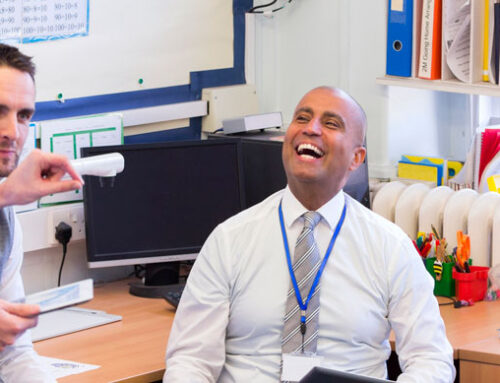Professional Learning Communities (PLCs). Why are PLCs important? Is your school a PLC?
If you do, what does this look like? More importantly…
Does it function well, or is it “just another staff meeting”?
Even if your school in particular doesn’t “have PLCs” likely you’ve heard of them. Professional Learning Communities. What are they? Is this just a fancy name for a staff meeting?
According to Solution Tree, a company with years of professional development expertise, PLCs are none of the above. A PLC isn’t a special program, but rather a system of working collaboratively that affects the entire school. A process. To be exact, “An ongoing process in which educators work collaboratively in recurring cycles of collective inquiry and action research to achieve better results for the students they serve. Professional learning communities operate under the assumption that the key to improved learning for students is continuous job-embedded learning for educators.”
So it’s not the occasional staff meeting, a shiny program, or tool that you can download. A PLC is a process that allows educators to meet regularly and effectively collaborate, for the purpose of better serving students. Let’s break down Solution Tree’s definition. They said that PLCs would work in cycles of inquiry and action research.
Inquiry
Inquiry is what many educators encourage in their students to help them learn. Teachers may ask their students: What problem do you want to solve? What interests you? Why do you think this is the way it is? Why are you interested? Etc. Inquiry ignites the learning process.
If there is to be school-wide Professional Learning Community, then there needs to be a school-wide culture of learning that affects everyone in the school. So the inquiry should involve teachers, administrators, students, their parents etc. Important questions to ask may be: Who are your students? What are their needs? What are their strengths? What are the goals for all students?
Questions like these can help identify school-wide goals. In some schools, smaller teams of teachers may meet and brainstorm and then discuss with a larger group, perhaps organized by grade level or department, before meeting a school-wide consensus. This kind of collaboration creates a school-wide community of active staff members, who have a voice along with administrators.
Action Research
The next step is to find answers to these identified questions. How will these identified goals be met? Action research implies doing. This could involve looking into school data. What does it tell you about what your school is doing well, and what needs work? But it’s more than data. This is something you could put into practice on a day to day basis in your classroom. Because this is about the students after all, not just a numbers game. When staff members are actively observing their students and trying to figure out better ways to help them, this level of engagement can be a more powerful form of research.
Suppose you’re a teacher, and a number of your students are currently struggling. The school-wide goal may be to improve student achievement. Inquiry leads you to ask ‘Why are they struggling?’ Action Research is your mission to find out. You may be looking for answers to things like: How are students being taught? What do or don’t students like about how they’re being taught? Could this be totally unrelated to the curriculum? For example, was there a recent tragedy in the community? Is this affecting the entire school? Besides observation, the best thing you can do is ask your students!
Then, do something about it. In a PLC, staff members are constantly working to find ways to best help students learn and assist them when they struggle to do so. Instead of simply leaving a struggling student behind as they move the class onwards, teachers can use their PLC, their system of support, to find ways to provide intervention for such students. Consider how one high school accomplished this here, under Big Idea #1.
Does the PLC Process Work?
Why are PLCs important? Just as a PLC functions as an ongoing process, the results create a cycle of benefits. First, teachers are positively affected. However, this may seem counterintuitive as the main goal is to improve student learning. But think of the name of this process itself, it’s a ‘Professional Learning Community.’ So in and of itself, the purpose is to create a system in which the professionals, “the staff” are learning too. This is done via the Inquiry and Research.
When teachers and administrators are continuously making efforts to learn how best to serve students, they both improve their professional practice. They learn how to improve at what they do and improve at how they interact with one another. Staff culture improves. And as a result, school culture improves as well (we talk a little more about that here). Added to that, everything that teachers are learning, is also helping their students improve learning skills. So each student has an opportunity to improve their learning experience. Win – Win.
This might sound too good to be true. It is likely there will be issues to iron out. But what better way to help students succeed, than for those teaching them to be actively involved in their growth? That’s the power of a PLC.






